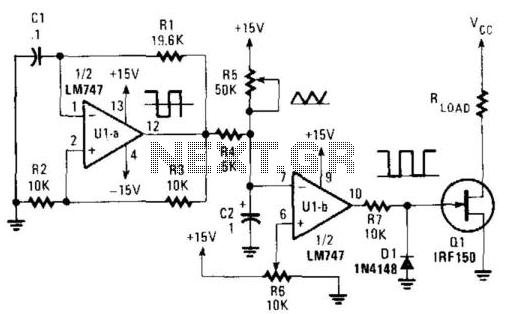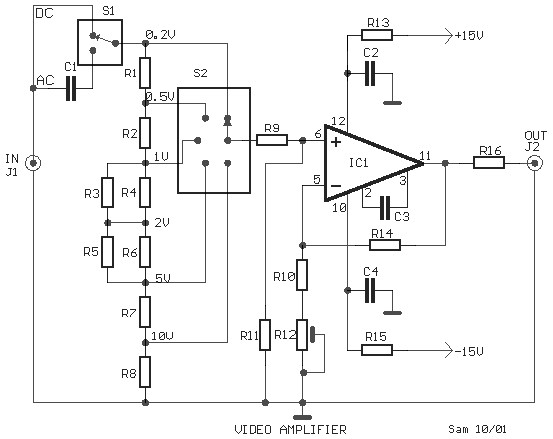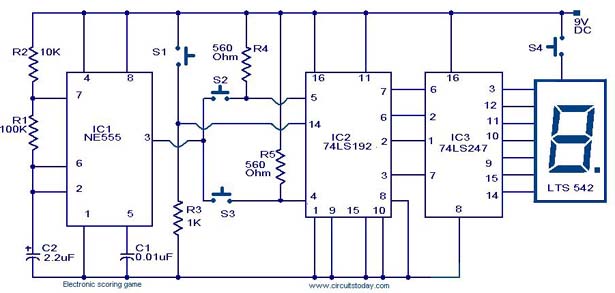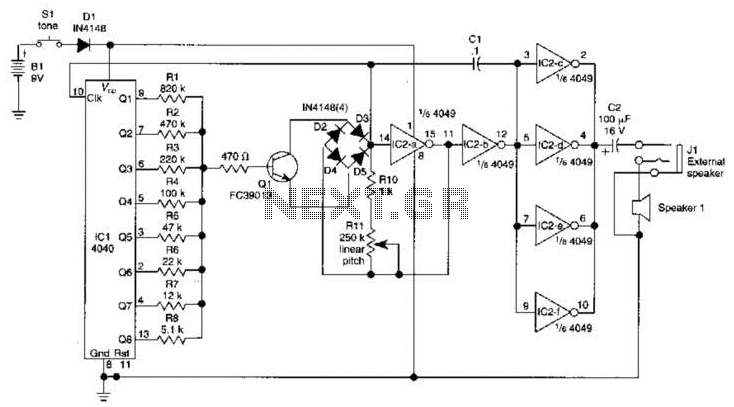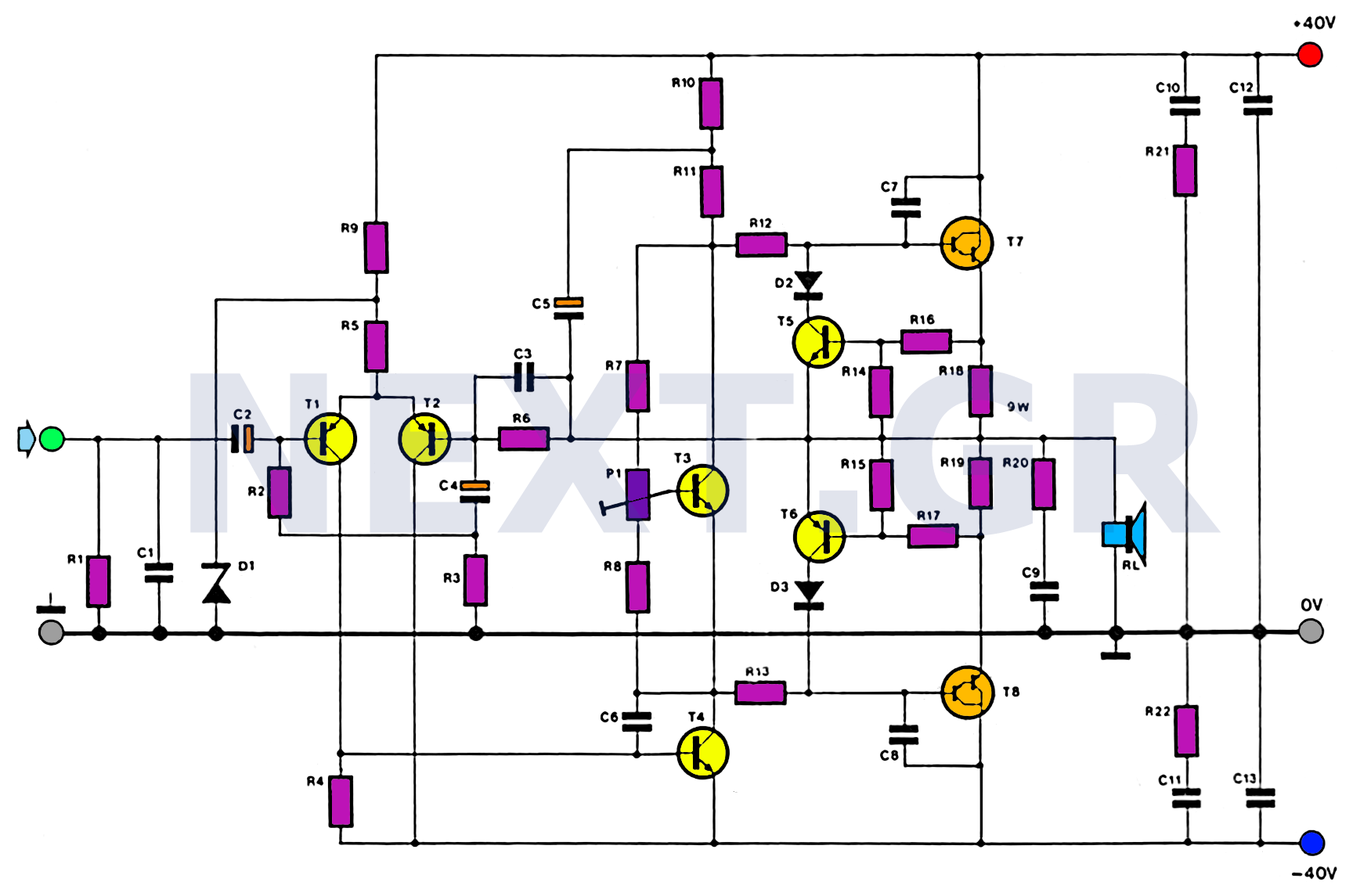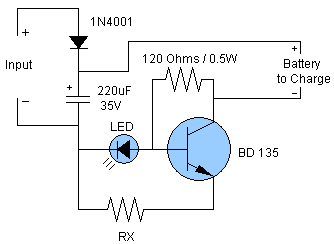
Frequency Modulator and Tuning Circuit

Here is a design circuit for a frequency modulator that is equipped with a tuning circuit. In this circuit, a pair of 1N4007 diodes is utilized as varactor diodes. The choice of 1N4007 diodes is not due to their specific suitability but rather because they were available. One of the varactors is directly coupled to the crystal circuit through a 1 nF capacitor, allowing for most of its capacitance change to be observed. The other varactor is coupled via a small trimmer to fine-tune its maximum effect. This configuration provides two independent channels: one for relatively coarse frequency tuning and the other for frequency-shift keying (FSK) modulation. The circuit data exhibits a characteristically parabolic shape, as expected. Any irregularities in the fine trace may be attributed to measurement errors. The y-coordinates are in Hz relative to 10.138000 MHz, with x representing reverse voltage, indicating that minor measurement inaccuracies can cause the fine trace to appear uneven.
The frequency modulator circuit utilizes a pair of 1N4007 diodes configured as varactor diodes, which are essential for voltage-controlled capacitance. In this application, one varactor is directly connected to the crystal oscillator circuit through a 1 nF capacitor, allowing for significant changes in capacitance to influence the oscillator frequency. This direct coupling ensures that the frequency modulation is responsive and effective, as the capacitance variation directly affects the oscillation frequency.
The second varactor is coupled through a small trimmer capacitor, which enables precise adjustments to maximize its effect on the modulation process. This dual-channel approach allows for a coarse tuning mechanism alongside a fine-tuning option, facilitating both broad frequency adjustments and more delicate frequency-shift keying (FSK) modulation.
The overall design results in a frequency modulation output that can be characterized by a parabolic response curve, which is typical for such circuits. The parabolic nature of the data indicates the relationship between reverse voltage applied to the varactor diodes and the resulting frequency changes. However, it is important to note that any anomalies in the data, particularly in the fine-tuning trace, may arise from measurement errors, emphasizing the need for careful calibration and measurement techniques.
In summary, this frequency modulator circuit effectively employs varactor diodes to achieve tunable frequency modulation, with a robust design that allows for both coarse and fine adjustments, suitable for various applications in communication systems where frequency stability and modulation accuracy are paramount.Here`s a design circuit for frequency modulator that is completed with tuning circuit. In this circuit is using pair of 1N4007s are used as varactor diodes. I picked 1N4007s not because they are particularly well suited, but simply that I had some on the bench. One of the varactors is directly coupled to the xtal circuit through 1 nF so most of it s capacitance change is seen, the other is coupled through a small trimmer to adjust its maximum effect. This gives two independent channels, one for relatively coarse frequency tuning, the other for FSK modulation.
Here`s the figure of the circuit; The data looks characteristically parabolic as expected. I suspect the oddness of the fine is measurement error. The y coordinates are in Hz relative to 10. 138000 MHz (x is reverse voltage) so it doesn`t take much error in measurement to make the fine trace look lumpy. 🔗 External reference
The frequency modulator circuit utilizes a pair of 1N4007 diodes configured as varactor diodes, which are essential for voltage-controlled capacitance. In this application, one varactor is directly connected to the crystal oscillator circuit through a 1 nF capacitor, allowing for significant changes in capacitance to influence the oscillator frequency. This direct coupling ensures that the frequency modulation is responsive and effective, as the capacitance variation directly affects the oscillation frequency.
The second varactor is coupled through a small trimmer capacitor, which enables precise adjustments to maximize its effect on the modulation process. This dual-channel approach allows for a coarse tuning mechanism alongside a fine-tuning option, facilitating both broad frequency adjustments and more delicate frequency-shift keying (FSK) modulation.
The overall design results in a frequency modulation output that can be characterized by a parabolic response curve, which is typical for such circuits. The parabolic nature of the data indicates the relationship between reverse voltage applied to the varactor diodes and the resulting frequency changes. However, it is important to note that any anomalies in the data, particularly in the fine-tuning trace, may arise from measurement errors, emphasizing the need for careful calibration and measurement techniques.
In summary, this frequency modulator circuit effectively employs varactor diodes to achieve tunable frequency modulation, with a robust design that allows for both coarse and fine adjustments, suitable for various applications in communication systems where frequency stability and modulation accuracy are paramount.Here`s a design circuit for frequency modulator that is completed with tuning circuit. In this circuit is using pair of 1N4007s are used as varactor diodes. I picked 1N4007s not because they are particularly well suited, but simply that I had some on the bench. One of the varactors is directly coupled to the xtal circuit through 1 nF so most of it s capacitance change is seen, the other is coupled through a small trimmer to adjust its maximum effect. This gives two independent channels, one for relatively coarse frequency tuning, the other for FSK modulation.
Here`s the figure of the circuit; The data looks characteristically parabolic as expected. I suspect the oddness of the fine is measurement error. The y coordinates are in Hz relative to 10. 138000 MHz (x is reverse voltage) so it doesn`t take much error in measurement to make the fine trace look lumpy. 🔗 External reference
Warning: include(partials/cookie-banner.php): Failed to open stream: Permission denied in /var/www/html/nextgr/view-circuit.php on line 713
Warning: include(): Failed opening 'partials/cookie-banner.php' for inclusion (include_path='.:/usr/share/php') in /var/www/html/nextgr/view-circuit.php on line 713
